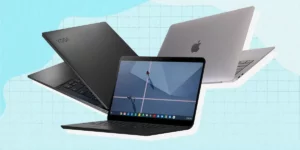Whether it’s on burgeoning platforms such as Twitch or even Youtube, Facebook, Ustream, or Instagram, live streaming has become one of the most popular forms of online internet. It makes for a wonderful hobby for anyone that wants to share their passions with the world. Anyone can jump on board to either play games, perform music, illustrate, or even simply show off whatever they may be doing at the moment. It doesn’t matter if you’re just venturing into online content creation or already an established entity. This is a very new world where all are welcome to stake their claim.
If you’re new to the entire concept, however, it can be a bit daunting and even a little confusing. Not only is there a bit of a settling in period if you’re merely watching live streams for the first time, there are certainly a lot of elements that will be difficult from the streamer’s end. Unfortunately, this presents a bit of a mountain to climb. With so much similar content already being generated, there’s a lot of competition right from the start. If you can’t keep a viewer engaged, they may leave your stream in relatively short order.
So, what can be done to make sure your stream is a success? From the very early stages all the way up to maintaining your momentum once you finally get going, there are a few key tips that will help you rise above those who were will be prepared. With that in mind, here’s how to start live streaming from your computer successfully:
1 – Make Sure Your Computer Has Some Power
First of all, it’s important to make sure your computer is up to the task in the first place. You need a strong processor, a solid graphics card, and plenty of RAM. If you have an older machine or even a budget laptop, it may hold you back. Anything having to do with video takes a lot of processing power.
If you find that you can’t afford upgrading, you can always try starting off by streaming at lower resolutions until you’re finally able to do so. Many viewers will prefer HD streaming, but you don’t have to feel overly held back at first. Note that building your own PC or merely updating your current rig piece by piece is easier and more affordable than you probably think.
2 – Check Your Internet Speeds

You also need quality internet if you’re going to be live streaming. You need to be streaming from a connection that can transfer a lot of data quickly, so be wary of any internet packages that skimp on the upload speeds. If you can’t provide a quality bitrate with a smooth connection, it’s going to be difficult to keep an audience engaged. On the same note, you should be sure you can stream from a wired connection that’s hooked directly into your modem whenever possible. Wireless should only be relied upon for mobile streams.
3 – Pick Your Streaming Platform
You’re also going to need a streaming platform on your computer to help you set up which parts of your screen will be captured. You can create certain scenes to switch between on the fly, giving your stream a professional look and feel once you get the knack for it. The two most popular options are currently XSplit and Open Broadcaster Software. OBS is a solid first choice since it’s free to use.
4 – Invest In A Quality Microphone

Even before you start thinking about webcams and the like, it’s important to grab a high-quality microphone. Something along the lines of the Blue Yeti or Blue Snowball will suffice until you have the means to upgrade to even higher-end models. Those models, in particular, are easy to use and can connect to your computer via USB. You should check out our list of the best microphones for streaming.
You should also invest in a shock mount for your mic and a pop filter. If you can keep your audio clean, you’ll already be ahead of the game. Even poor visuals can usually be forgiven if you can at least be heard well.
5 – Watch Your Audio Levels
On the same note, make sure you can monitor your audio levels within your streaming software. A lot of the most egregious rookie mistakes come from allowing your audio to soar to uncomfortable levels. Always keep your audio from peaking, which will usually be indicated graphically by level meters that turn red. Once you really get serious, you can buy a mixing board for your mic to help you adjust things on the fly.
6 – Put Yourself Out There
There are some other additional steps such as gathering some graphics for your intros, screen transitions, and overlays, but all of that is ultimately fluff. The most important step once you have all of the pieces above in place is to simply start streaming and let the world know. Keep it up consistently with a regular schedule and do everything you can to advertise on social media. Re-post your streams to Youtube as well, and with time you’ll hopefully build an audience.
Although it is not recommended, you can start livestreaming from a 17 inch laptop as well, just make sure it has enough power. If you want a good one, you can check out our awesome list of the best 17 inch laptops.


